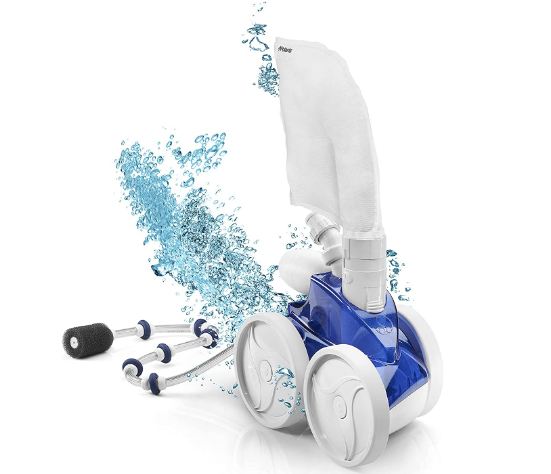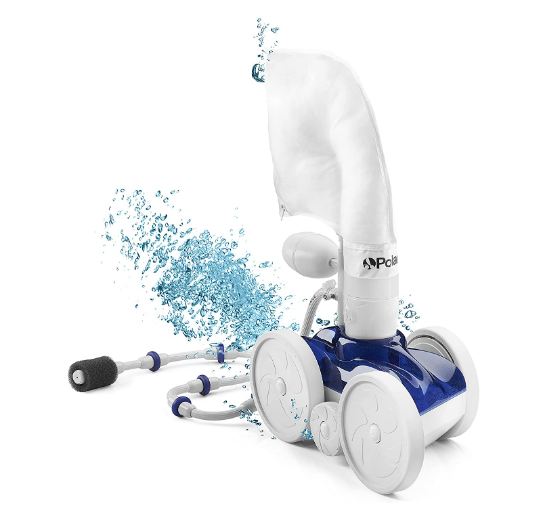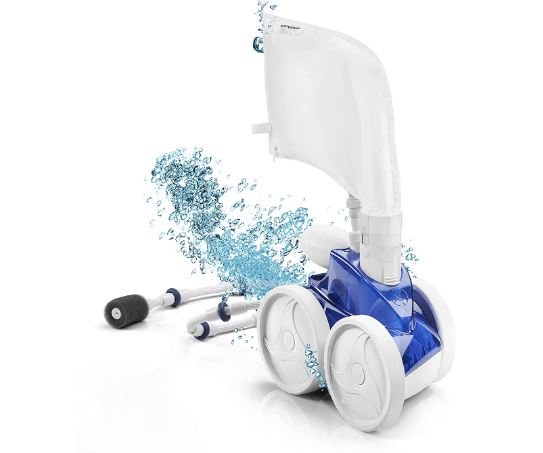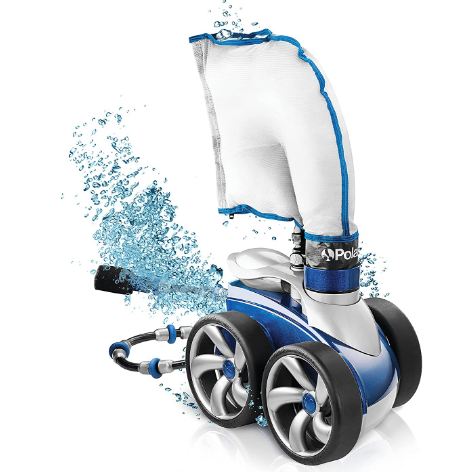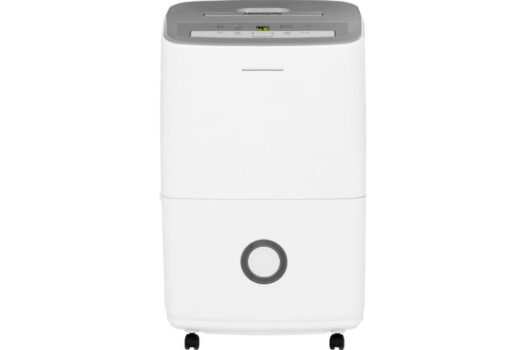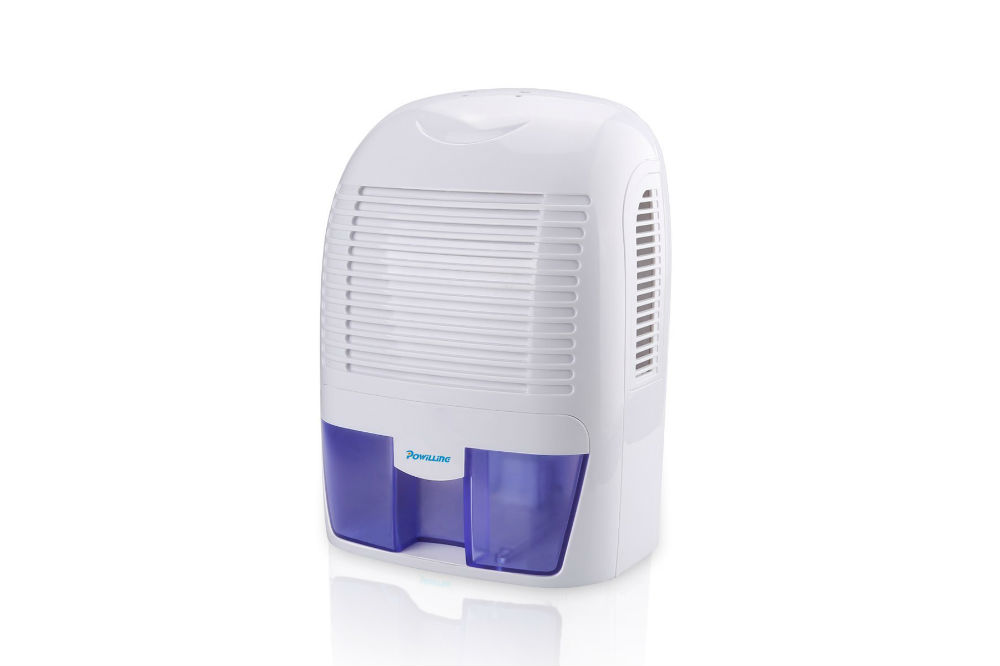Wondering which Polaris pressure-side pool cleaner to get?
This 4-way comparison compares the Polaris 280, 360, 380, and 3900 Sport. These are the top-rated Polaris pool cleaners.
They do, however, differ in their price, features, and cleaning performance.
Continue reading to discover the best one for your pool.
NOTE: we review other popular brands in our comprehensive pressure side cleaner buying guide, in case you’re not looking for a Polaris cleaner.
What’s in This Buying Guide
Table of Contents
Polaris Pressure-Side Pool Cleaners Compared
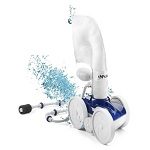
Polaris Vac-Sweep 280
Award:
Best For… Reliability – by far the most proven product, but it does require a booster pumpType:
PressureWeight:
6.2lbsPrice:
$$
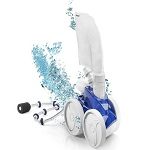
Polaris Vac-Sweep 360
Award:
Best for… Saving Money – similar performance to 280, but no booster pump is requiredType:
PressureWeight:
15.62lbsPrice:
$$
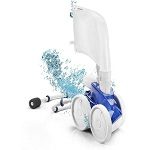
Polaris Vac-Sweep 380
Award:
Best for… Cleaning Stairs and Walls – designed to climb vertical surfacesType:
PressureWeight:
16.8lbsPrice:
$$
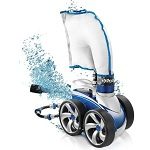
Polaris VAC-SWEEP 3900
Award:
Best for Large Pools – largest debris bag size, high gpmType:
PressureWeight:
20.5lbsPrice:
$$$
PROS
- Affordable.
- Cleanse the floor and walls.
- Filter bag with large capacity
- No babysitting is required.
CONS
- You will need a booster pump.
- The maintenance of the gear drive system is more complex than the belt drive system.
Our Review
We recommend the Polaris 280 to pool owners who are looking for a high-performance and affordable pool cleaner.
It is powered by two venturi jets rather than three, which provide suction to collect debris and drive the shaft drive mechanism.
The Polaris 280 vacuums the pool’s floor and walls using a sweeper tail. It uses a sweeper tail that blows debris out of corners and loosens stuck dirt.
The suction generated from the force of water coming back into the pool allows the cleaner to pick up all kinds of debris.
The Polaris 280 pool cleaner is just like the others. However, it works independently from your pool filter.
The debris is placed in an onboard big-capacity filter bag.
The cleaner filters the debris and circulates the water throughout the pool.
The Polaris 280 is similar to the 380 or 3900 and requires a booster pump. You will need to purchase one separately.
Issues and Limitations
The Polaris 280 is slower to clean because it only has two jets. It takes 4-5 hours to clean a pool, while other models take only 2-3 hours.
Another issue is the need to adjust your cleaner for the best cleaning results. The water pressure must be adjusted to ensure that the cleaner does not move too slowly or fast.
It will also require some adjustments to allow it to climb the wall and clean it.
There will be some trial and error at the beginning. However, once the cleaner is properly moving, you can relax.
PROS
- Reliable performance
- Floor and wall sweeps
- Self-contained filtration system
- There is no booster pump.
CONS
- It takes time to set up and adjust.
Our Review
Polaris pool sweep 360 has the highest reviews out of all four models, making it an excellent choice for anyone looking for a reliable and trusted pool cleaner.
Many pool owners agree that it is clean, easy to maintain, and lasts years without problems.
This cleaner is popular with pool owners because it doesn’t require a booster pump. No additional costs after you purchase the cleaner.
It can be connected to the pressure line of your pool and will work with the existing pool pump.
The Polaris 360’s three venturi jets give it a little more power than its 280 counterparts. It cleans the pool faster and is easier to scale the pool walls.
It uses the same 3-wheel design of the 280/380.
The sweeper tail can remove stuck materials and algae and stir up scraps that may be hiding at corners and around edges.
The vacuum inlet, 2 1/4″ wide, picks up all types of debris, from leaves and acorns to fine sand. The debris is captured in an onboard bag, making it easy for your pool filter to do its job.
Issues and Limitations
The Polaris 360‘s main problem is similar to other Polaris models: it takes time to set up and adjust properly.
You can’t just dip it in the water, unlike robotic cleaners.
It takes between 30 and 60 minutes to connect the houses, measure the RPMs, adjust the cleaner to the correct pressure, and measure the RPMs.
Also, make sure it is not climbing up the wall above the waterline.
You don’t need to install a booster pump which makes setup quicker and more straightforward.
PROS
- Pool coverage.
- Durable and low-maintenance
- It is relatively easy to clean.
- The onboard filter bag lessened the load on the pool filter.
CONS
- You will need a booster pump.
Our Review
The Polaris 380, a more expensive version of the Polaris 360, is the next step up in performance and price.
It shares many of its features with Polaris 360. However, it has a slight advantage in terms of coverage. The 360 can clean the walls and steps better than the 380, while the 360 can only clean the bottom and walls.
The 380 also requires a booster pump. If you don’t have one, you will need to add it.
Other than that, all features of the Polaris 360 are identical: the sweeper tail for loosening and blowing up debris, three venturi Jets powering suction, mobility, and a 3-wheeled design with an onboard filter bag.
The 380 is a powerful tool for cleaning up all kinds of debris, including leaves, sand, and silt. It can clean a standard-sized in-ground pool in just 3 hours.
Issues and Limitations
The Polaris 380 isn’t as great as the 360.
The 360 offers more value than the 380. Although the 380 is more costly, it performs about as well in cleaning performance as the 360.
The booster pump is an additional cost.
PROS
- Pool coverage from bottom to wall and steps.
- Picks up all kinds of debris.
- Double chamber bags can hold more debris than other filters bags.
- 40 GPM flow rate increases pool circulation, which keeps the pool clean and prevents dead spots.
CONS
- Expensive.
- You will need a booster pump.
Our Review
The 3900 Sport is one of the most powerful and costly models. The dual-chamber filter bag captures leaves, bugs, and other debris. It can circulate up to 40 gallons per minute.
This cleaner has a wider vacuum port than the others (2.5” vs. 2 ”), so it can pick up large pieces of debris. This cleaner is ideal for pools near trees that can drop leaves, twigs, and acorns into water.
It has three venturi-jets, which power an all-wheel-drive system. This allows the cleaner almost to reach every corner of the pool without getting stuck or stalling.
The 3900 can climb walls and clean the steps with ease.
It has a sweeper tail, which blows up dirt from corners and agitates some algae and debris stuck to the pool floor and walls.
You will still need to clean the pool manually every now and again.
The Polaris 3900, like the 280 or 380, requires a booster pump.
Issues and Limitations
The 3900 Sport is more difficult to maintain than other models. This could be due to the fact that it has more parts or because the design is more complex (e.g., the stainless-steel all-wheel-drive chain).
Customers report more problems that need frequent repairs or replacements of parts.
The 3900 Sport comes with a 5-year warranty on the frame and a one-year warranty on the other parts.
Cost is another issue. Add to that the price of a booster pump and the 3900 Sport are already costly.
It’s well worth the investment if you want to get the best cleaning performance.
Our Bottom Line
These four models make excellent choices for in-ground pool owners. They all work well, last a long time and do an excellent job cleaning.
The Polaris 280 pool cleaner is the best option for most standard-size inground pool owners.
The 360 pool cleaner is the best choice for those looking for an economical cleaner.
The Polaris 380 pool cleaner is by far the most proven and most popular, while the more expensive Polaris 3900 is the right choice for large pool owners who need the maximum cleaning power.
I’m a degreed ME (mechanical engineer) who is passionate about machines of all kinds. I created MachineWonders.com as a way to connect with others who love machines like me – or need help choosing one for their needs, application, or situation.

